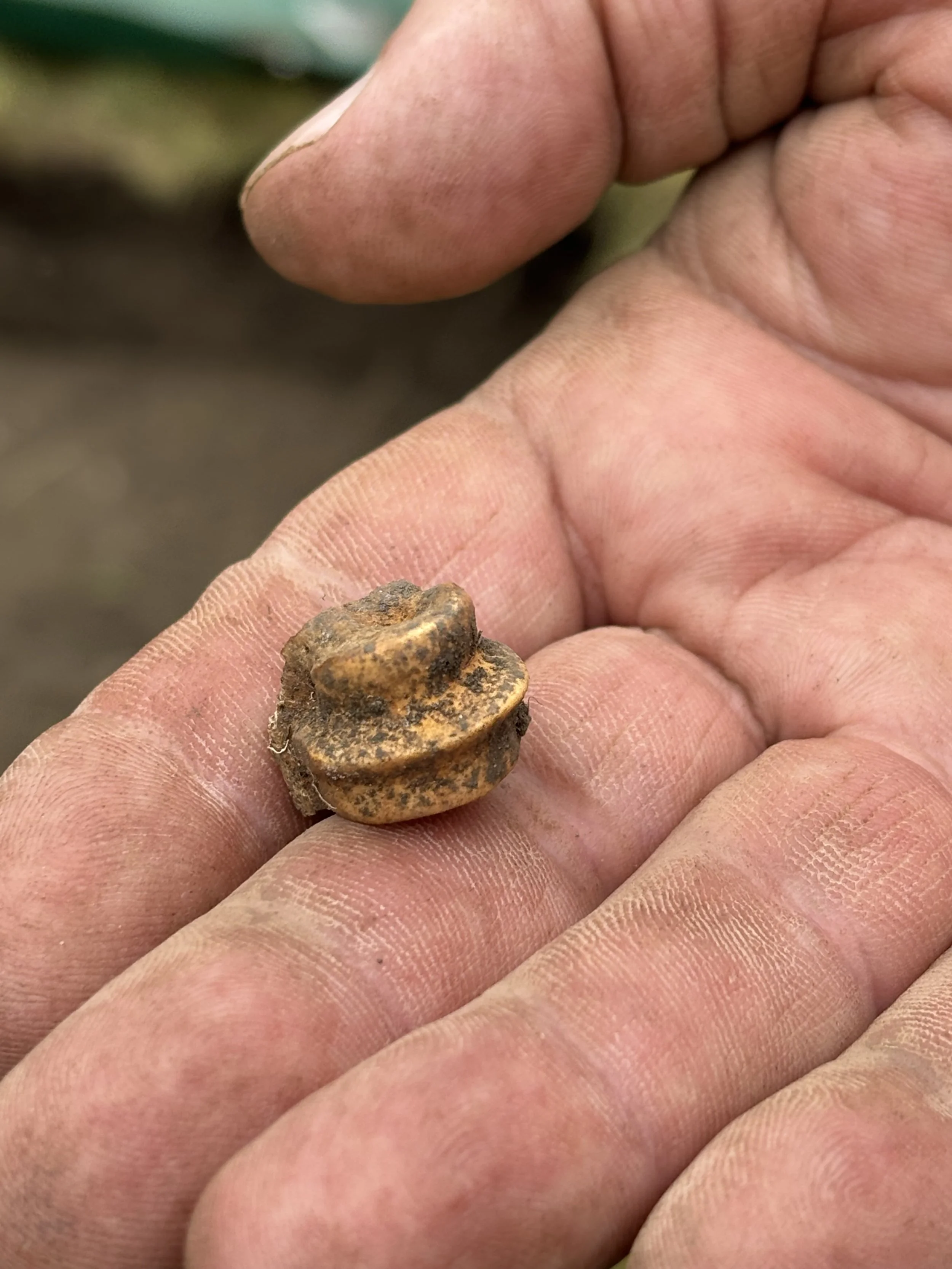What’s down there? Digging for discovery in Longframlington
Have you ever wondered what might lie buried beneath your garden? With Northumberland’s rich history, there could be something important or certainly interesting beneath your manicured lawn. That’s what Dr Jane Harrison and Sarah Miles, of Community Archaeology North, are hoping to find in the village of Longframlington, on the A697 to Scotland, 11 miles from Morpeth, nine from Alnwick, and five miles away from Rothbury. It is on an old drovers’ route, and a Roman road known as the Devil’s Causeway passes through the far end of the village.
The archaeologists have launched a search for evidence of an early medieval, pre-Norman settlement, and are on a more general mission to increase knowledge of the post-Roman period in this part of the world.
The project involves villagers volunteering to allow test pits to be dug in their gardens, a metre square and deep. A display board at Longframlington memorial hall earlier this year explained the process: measure and mark out a 1 metre x 1 metre test pit; carefully remove the turf; excavate in 10 cm layers; sieve the soil and sort the finds; record the contexts and finds; backfill from the spoil heap; returf and tidy up. The process takes just two days.
At the packed open morning at the memorial hall earlier this year – regular meetings of the village history society are similarly well attended - Dr Harrison explained that Northumberland gets little or no mention in the Domesday Book. That may well be because William the Conqueror’s harrying of the north post-1066 laid most settlements in our region to waste: “Too many rebellious, elite Saxons up here.”
She also confirmed that archaeologists have no beef with detectorists, those metal detector enthusiasts popularised in the TV series starring Mackenzie Crook and Toby Jones. “We love Detectorists!” she said. Sure enough, there were some on hand at the first Longframlington dig, including a local farmer who said he’d been doing it since 1978, “and I didn’t find anything at all for 16 years!”
Early finds have included medieval pottery; the conclusion that a bank marked on older maps as possibly a Roman camp is probably natural topography; a centuries-old articulated skeleton of a lamb, minus its head; a previously unknown pre-18th century building and cobbled yard; and an 18th-century cobbled surface overlying a medieval one. This is before the post-excavation analysis of pottery and artefacts.
Jane and Sarah insist that finding nothing is as important as finding something. Even if they unearth something extraordinary, that doesn’t mean they will come back and dig up your whole garden.
We have volunteered our place for a future dig. While assisting at a dig at our neighbour’s, my wife persuaded a detectorist to do a recce at ours. A “between-the-wars” bicycle bell was discovered, at a time when our patch was just a field. Later I was watching our grandchildren struggling to play bowls on our very bumpy lawn, and found myself wondering, could those bumps actually be traces of medieval ploughing? You never know. We hope for answers …
The Community Archaeology team are aided by experienced volunteers, but they also need local volunteers, too, and donations.
Greg Freeman




